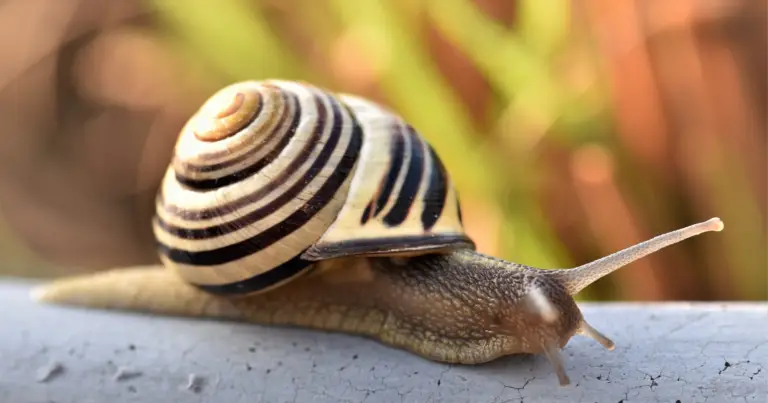How to Breed Nerite Snails: Essential Tips for Success

Breeding nerite snails, members of the Neritidae family is an interesting and rewarding process for aquarists. These colorful and lively creatures are popular additions to freshwater tanks due to their algae-eating habits and unique appearances. However, breeding them in captivity requires some knowledge and understanding of their natural habits to ensure success.
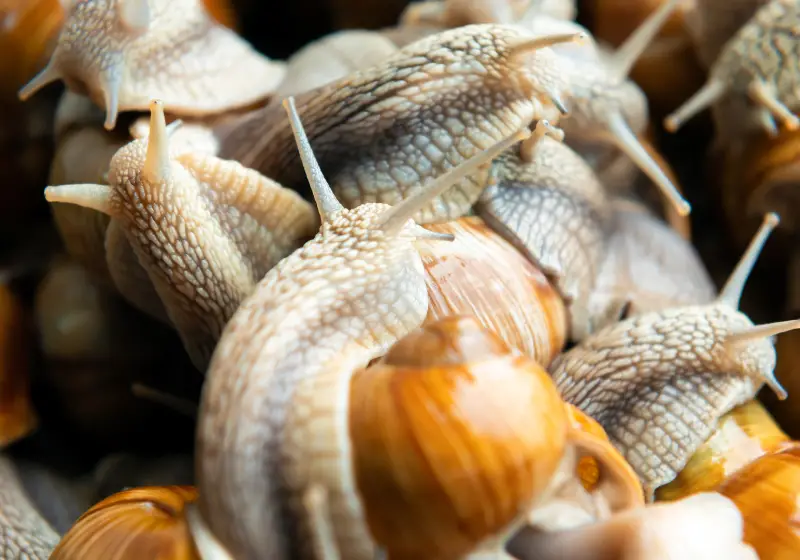
Nerite snails are renowned for cleaning up aquariums by consuming unwanted algae and debris. As they do not reproduce in freshwater environments, you can maintain a balanced snail population in your tank. To encourage breeding, you must provide proper water conditions, nutrition, and an environment conducive to their reproduction process.
To breed your nerite snails, it is crucial to learn about their mating habits, determine their gender, and promote a healthy environment in your aquarium. You can successfully breed these beneficial tank inhabitants with proper care and attention and add a unique touch to your freshwater ecosystem.
Contents
Table of Contents
Understanding Nerite Snails

Nerite snails are popular aquatic pets due to their attractive appearance and their ability to clean tanks by consuming algae. There are various species of nerite snails, each with unique features and colors. In this section, you will learn about some common nerite snail species, their appearance, size, and life expectancy.
Zebra Nerite Snail (Neritina natalensis Zebra): This species has a shell with alternating gold, yellow, light brown, and green colors, featuring uneven stripes that make it very noticeable when placed in a tank of water. Zebra nerite snails typically grow up to an inch in size, making them suitable for smaller aquariums.
Olive Nerite Snail: Olive nerite snails have smooth, dark olive-green shells and are known for their relatively small size. They usually grow up to half an inch and are an excellent choice for nano tanks or smaller setups.
Tiger Nerite Snail: Tiger nerite snails are known for their eye-catching yellow or golden shell with black stripes, resembling a tiger’s coat. They typically grow to an inch in size like the zebra nerite and are avid algae eaters.
Horned Nerite Snail: As the name suggests, this species is unique due to the horn-like protrusions present on its shell. Horned nerite snails come in various colors and patterns, including dark brown and green stripes. They are smaller than most other nerite snail species, growing only up to half an inch in size.
Red Racer Nerite Snail: The red racer nerite snail boasts a striking red coloration on its shell with thin black stripes. It is one of the larger species, growing up to 1.5 inches in size, and is suitable for larger tanks.
Black Racer Nerite Snail: Similar to the red racer, the black racer Nerite snail features a black shell with white stripes, giving it a sleek and modern look. It typically grows up to an inch in size, making it a suitable tank mate for smaller or medium-sized aquariums.
When considering nerite snails for your aquarium, it’s essential to remember that these creatures can live up to 3-5 years if well cared for. The different species of nerite snails mentioned above have varying appearances, sizes, and color patterns, so it’s vital to choose the one that best fits the aesthetic of your tank and the space available within it.
Natural Habitat of Nerite Snails
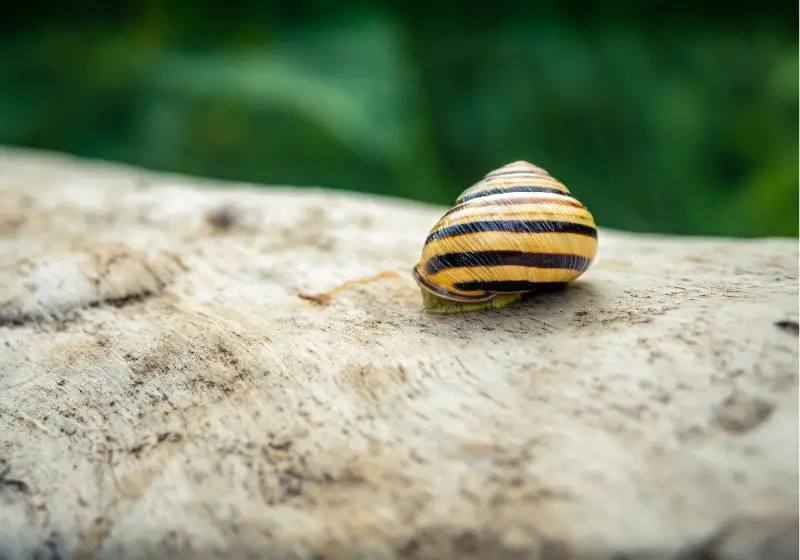
Nerite snails thrive in various aquatic environments, such as freshwater and brackish water. As an aquarium hobbyist looking to breed these snails, understanding their natural habitat is crucial.
In the wild, you can typically find nerite snails in rivers and streams, where they feed on algae and other organic matter. They prefer habitats with plenty of hiding spots, suitable substrate, and sufficient grazing areas for their algae-eating needs. Your aquarium setup should mimic these conditions to ensure the well-being and longevity of your nerite snails.
It is important to note that the breeding success of nerite snails tends to be higher in their natural habitats, such as brackish water or saltwater environments. To increase the likelihood of successful breeding in your aquarium, consider introducing a group of nerite snails to ensure the presence of both males and females.
While nerite snails can adapt to various water conditions, it is essential to maintain stable water parameters for optimal health. Keep consistent water temperature, pH level, and water hardness within the recommended range for nerite snails. This will result in a comfortable environment encouraging natural behaviors like breeding.
In summary, to breed nerite snails in your aquarium, closely replicate their natural habitat, including freshwater or brackish water conditions, and provide them with suitable living conditions for optimal health and breeding success.
Characteristics of Nerite Snails

Nerite snails are known for their peaceful temperament and hardy nature, making them an excellent addition to your aquarium. They are easy to care for, even for beginners, and are well-suited to a range of tank conditions. In this section, you will learn about the main characteristics that make these snails popular among aquarists.
One of the most striking features of nerite snails is their unique shell patterns. You might encounter species such as the Zebra Nerite Snail, which displays uneven golden to brown stripes, or the Green Nerite Snail, showcasing a greenish-yellow hue. These vibrant colorations and intricate designs make them an attractive addition to any aquarium.
Another notable characteristic of nerite snails is their hardy nature. They adapt well to various water conditions, making them easy to care for in your aquarium. While they thrive best in freshwater tanks, some nerite snails can tolerate brackish water. However, providing a stable environment with consistent water parameters is essential to keep them healthy.
When it comes to functionality, nerite snails are excellent tank cleaners. They actively consume algae, improving the water quality and reducing the need for maintenance. Their peaceful temperament ensures that they coexist harmoniously with other aquatic creatures, such as dwarf shrimp, without causing any disruptions.
In terms of physical appearance, nerite snails have distinctive antennae which they use to navigate their environment. These sensory organs allow them to move around the tank effectively and find food sources efficiently.
To sum up, nerite snails are a remarkable addition to your aquarium, thanks to their colorful patterns, peaceful demeanor, hardy nature, and useful algae-eating habits. Their unique antennae aid in their navigation abilities, and their adaptability makes them suitable for many aquarium environments.
Dietary Requirements
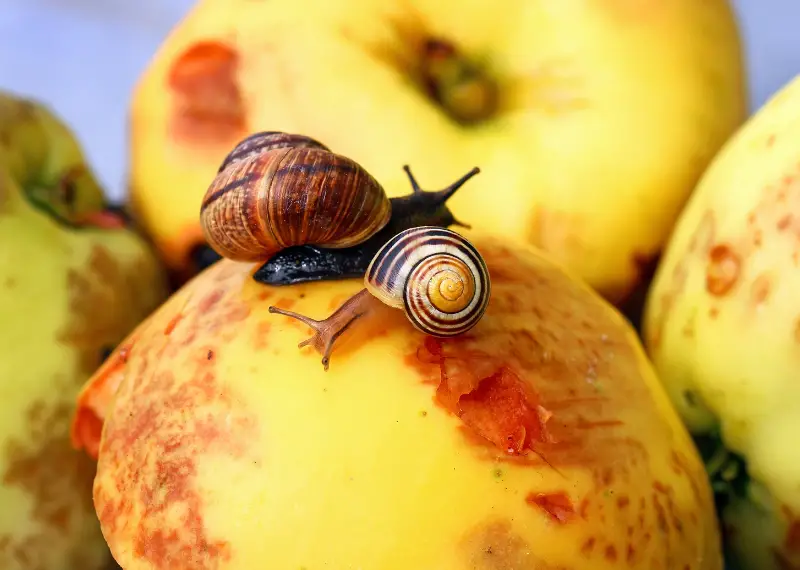
Nerite snails are primarily herbivores and rely on algae as their main food source. In your aquarium, they will actively seek out and consume various types of algae. This keeps your tank clean and makes it efficient at controlling algae growth.
Apart from algae, you can supplement their diet with algae wafers. These are specially formulated with key nutrients that help maintain their overall health. When introducing algae wafers into your tank, ensure they do not exceed the quantity your snails can consume within a day. Overfeeding may lead to poor water quality and declining your snails’ wellbeing.
In addition to algae and algae wafers, you can treat your nerite snails with blanched vegetables. Vegetables like zucchini, cucumber, and spinach can be blanched in boiling water and then cooled before being placed in the tank. This provides essential nutrients and minerals that might not be available in their natural diet.
Remember to remove any uneaten vegetables from the tank after 24 hours to prevent them from decaying and affecting water quality.
Maintaining a healthy diet of algae, algae wafers, and blanched vegetables can support your nerite snails’ optimal growth and well-being, ensuring they thrive in your aquarium.
Sexual Maturity and Identification
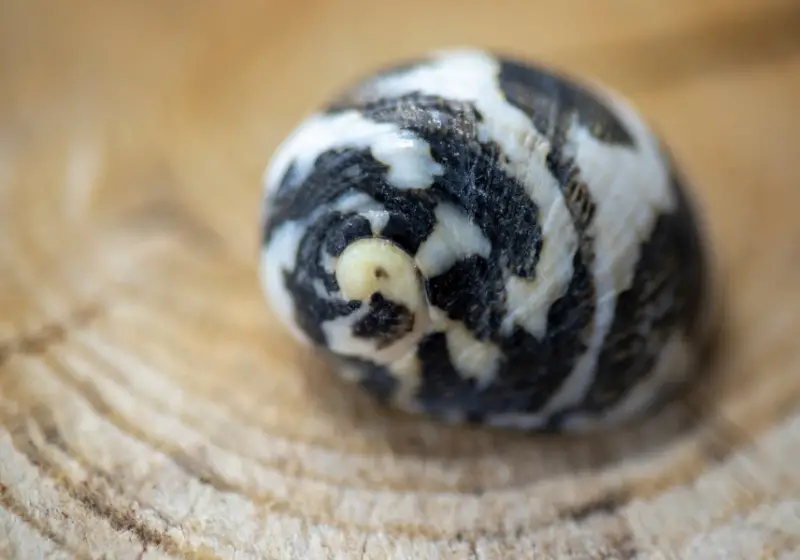
As you venture into breeding nerite snails, it’s essential first to determine when your snails have reached sexual maturity. Nerite snails generally reach maturity when they are about 1 inch long, which can take approximately 6 months to a year. At this point, they are ready to breed, and you need to identify their gender.
Determining the gender of nerite snails can be quite difficult, as there aren’t many visible differences between males and females. Typically, females are slightly larger than males, but this size difference may not always be noticeable. Paying close attention to their size can help you distinguish males from females, but it’s not a foolproof method.
To breed nerite snails successfully, having both males and females in the tank is important. When they mate, the male nerite snail will position himself beside the female (on her right side) and insert his reproductive organ below her mantle edge. After fertilization, the female will lay an egg capsule containing about 30-100 eggs.
While these steps may help you identify whether you have a male or female snail, remember that their gender differences can be subtle, and close observation is crucial.
If you cannot determine the gender of your snails with certainty, it’s advisable to have multiple nerite snails (at least five) in your tank or aquarium. This increases the chances of having both male and female snails, allowing for successful breeding.
Ensure you maintain an appropriate tank size for the number of snails – a minimum of 5 gallons for a single nerite, with an additional 5 gallons required for each snail you add to the tank. This ensures that there’s enough algae supply to meet their dietary needs and supports their breeding process.
Tips for Setting up Breeding Tank
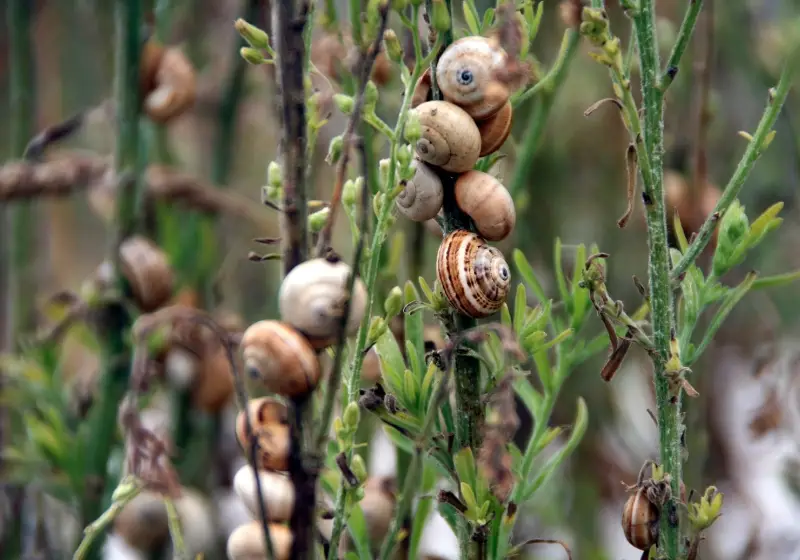
When setting up a breeding tank for nerite snails, it is essential to mimic their natural environment as closely as possible. Here are some key factors to consider when creating the ideal breeding tank for your snails:
Choose the right tank size. A minimum of 5 gallons is necessary for your breeding tank, but going for a tank that can hold at least 10 gallons of water is even better. A larger tank size will provide more space for the snails to breed and lay eggs, increasing the chances of successful breeding.
A mixture of sand and smooth rocks is an excellent choice for the substrate in the breeding tank. The sand will allow the snails to move around freely and comfortably, while the snails can use the smooth rocks to lay their eggs. Ensure the rocks are not too sharp or abrasive, as this can harm your snails.
The water temperature is crucial for the well-being and breeding of your nerite snails. Aim for a temperature range between 72°F to 78°F (22°C to 25°C). Consistent water temperature is essential, so investing in a reliable heater is a good idea.
Proper lighting is necessary to maintain the health of your snails, as they rely on algae growth for food. A natural light cycle of around 12 hours of light per day is optimal for promoting algae growth. Ensure the lighting is not too bright and not placed directly over the tank, as this can stress the snails.
To ensure the environment in the breeding tank is suitable for your nerite snails, closely monitor the water parameters. The optimal pH range for nerite snails is 7.5 to 8.5, and water hardness should be maintained between 6 to 12dGH. Regular water changes can help maintain stable water parameters, and the use of a water test kit is highly recommended.
By carefully setting up your breeding tank and providing the optimal environment conditions for your nerite snails, you will increase your chances of successfully breeding and raising these beautiful aquarium inhabitants.
Care Guide for Nerite Snails – Watch this
Breeding Conditions and Parameters
To successfully breed Nerite snails, providing them with optimal water conditions is important. This includes stable water parameters like pH, GH, KH, temperature, and adequate calcium content. Additionally, providing an environment with the right salinity levels will help ensure that your snails breed successfully.
First, ensure that your aquarium maintains a pH level between 7.0 and 8.5, which is the ideal pH range for Nerite snails1. In addition to pH levels, pay attention to the water hardness—both General Hardness (GH) and Carbonate Hardness (KH). Keep the GH level between 3 and 12 dGH and the KH level between 3 and 18 dKH2.
Temperature is another important factor when breeding Nerite snails. Keep the water temperature stable within the range of 72-78°F (22-26°C)3. Remember, sharp fluctuations in temperature can stress your snails and disrupt the breeding process.
Calcium content within the water is essential for developing Nerite snail shells. A calcium-rich environment helps support healthy growth, so ensure that your tank contains adequate calcium levels. One common way to supplement calcium is by adding crushed coral to your aquarium or using a calcium additive specifically designed for snail care 4.
Finally, salinity is a critical factor in Nerite snail reproduction. Breeding typically occurs in a brackish water environment with a higher salt content than freshwater but less than typical seawater. Ensure that your aquarium maintains a specific gravity between 1.005 and 1.010, as this range encourages breeding among Nerite snails5.
By maintaining these specified water conditions and parameters, you can create an optimal environment for Nerite snails to breed successfully. Good luck with your snail breeding venture!
The Breeding Process

Before you start breeding your nerite snails, it’s important to determine their gender. Unfortunately, determining the gender of nerite snails can be difficult since males and females look quite similar. One way to identify the gender is during mating, where the male is usually on top of the female.
Once you’ve identified the genders of your snails, you can begin the breeding process. Remember that nerite snails do not reproduce as rapidly as other snail species, so it may take some time before you see any progress.
To help facilitate breeding, maintain a clean and healthy environment for your snails. Provide them with plenty of surfaces to explore and lay their eggs on, such as rocks and driftwood. Maintaining a proper water temperature and pH level is crucial to encourage mating behavior.
In a well-maintained tank, nerite snails will mate and lay egg capsules. These capsules are typically hard, white, and semi-transparent. You will likely find these egg capsules attached to surfaces within the aquarium.
After the eggs are laid, you must be patient. The development of nerite snail eggs can take several weeks, depending on factors like temperature and water conditions. Be sure to monitor the egg capsules regularly and provide appropriate care for embryos as they develop.
Once the juvenile snails hatch, you may consider separating them from the adults to ensure their safety and continued growth. You can reintroduce the young snails into your main tank as they mature. Remember that nerite snails do not breed as frequently as other species, so enjoy observing the progress of your new population.
Following these steps can lead to successful nerite snail breeding. Just remember to be patient and persistent, and provide your snails with a suitable environment to encourage a healthy and thriving snail population.
Post Breeding Care

After breeding, it’s important to properly care for your nerite snail larvae to ensure they grow and thrive. Since these snails are excellent algae eaters, ensure an adequate food supply in the tank. Offer plenty of surfaces with algae growth or supplement their diet with algae wafers to support their growth.
Keep the water conditions optimal for the larvae by maintaining the temperature between 71-79°F (22-26°C) and a pH level of 7.0-8.5. Ensure the water is moderately hard to very hard as it aids in their shell development. Regular water changes and proper tank filtration will also help maintain a clean and healthy environment for the young ones.
During this phase, watching out for potential predators in the tank is crucial. Loaches and tetras, for instance, might prey on the snail larvae. Consider temporarily relocating the larvae to a separate tank or providing hiding spots, like plants and rocks, to reduce predation risk.
Keep an eye on the growth and development of your nerite snail larvae. You may notice changes in their shells as they mature, indicating their progress. Once they reach a substantial size, you can transfer them back to the main tank if they were separated, where they’ll continue their role as efficient algae eaters.
By following these steps and monitoring your nerite snail larvae’s growth, you’ll provide them with the necessary care they need to grow into healthy and productive aquarium inhabitants.
Choosing Tank Mates
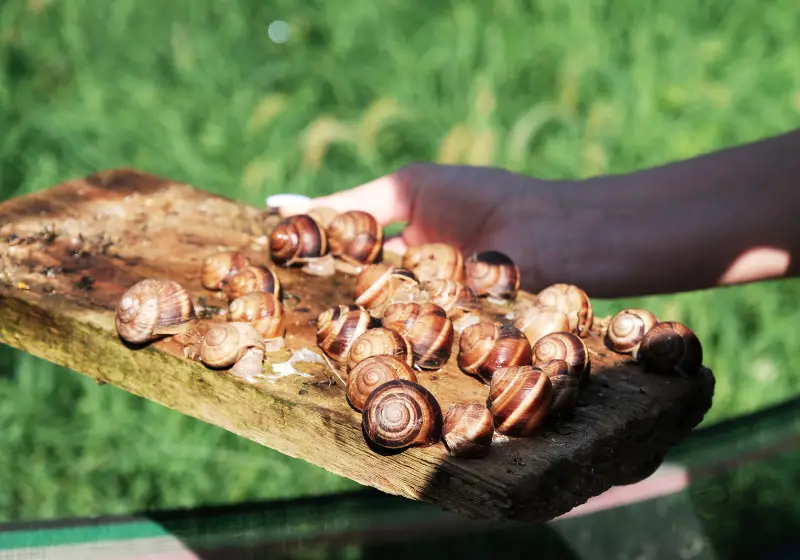
When setting up a tank environment for nerite snails, selecting appropriate tank mates that will peacefully coexist with them is essential. Nerite snails are algae-eating snails and are highly beneficial for any planted aquarium. They are non-aggressive and thrive in a community setting.
Some ideal tank mates for nerite snails include fish and dwarf shrimp. For instance, peaceful fish such as tetras, guppies, and rasboras make excellent companions due to their non-predatory nature. These fish will not threaten your nerite snails and will add color and liveliness to your tank.
Dwarf shrimp, such as cherry shrimp, can also be great in a nerite snail tank. Since both snails and shrimp are part of the cleaning crew, they can work well together to maintain a clean and healthy tank. Ensure to provide enough hiding spots and areas where the shrimp and snails can reach food sources.
On the other hand, it’s important to avoid aggressive species such as cichlids and bettas. Cichlids can be territorial and may attempt to harm the nerite snails. Similarly, bettas may not coexist well with snails, as some bettas tend to nip at the snail’s antennae or even attack them.
In conclusion, be sure to choose peaceful and compatible tank mates for your nerite snails. This will ensure a harmonious environment where your snails can thrive and efficiently perform their algae-eating duties, keeping your aquatic setup clean and beautiful.
Common Troubleshooting Problems

Breeding Nerite snails can pose certain challenges, but with proper care and attention, these problems can be addressed. This section will discuss common troubleshooting problems and their solutions, focusing on water quality, water parameters, water requirements, and quality of life aspects.
Water quality issues can greatly impact the success of Nerite snail breeding. To maintain a healthy environment for the snails, ensure that your aquarium’s water is free from ammonia, nitrite, and high nitrate levels. Regularly test the water conditions and make necessary adjustments. Conduct weekly water changes to keep the water clean and safe.
Water parameters are crucial for the successful breeding of Nerite snails. Optimal water conditions include maintaining a pH level between 7.0 and 8.2, water hardness between 6 and 12 dGH, and a temperature range of 72-78°F (22-26°C). Meticulously monitor these parameters and make necessary adjustments if needed.
Water requirements for Nerite snails include a well-oxygenated aquarium with moderate water movement. Ensure there are no dramatic fluctuations in temperature and other water parameters. Furthermore, provide hiding spots and appropriate surfaces for your snails to lay their eggs, such as rocks and driftwood.
Quality of life aspects must also be considered during the breeding process. To keep your Nerite snails healthy and stress-free, provide a balanced diet consisting of algae and biofilm that naturally grows in the tank. You can also supplement their diet with algae wafers and blanched vegetables like zucchini or spinach. Ensuring their nutritional needs are met will positively impact their breeding success.
In conclusion, by maintaining proper water quality, offering stability in key water parameters, meeting water requirements, and caring for their quality of life, you should be able to overcome the challenges of breeding Nerite snails and establish a thriving, well-maintained population.
Conclusion: How to Breed Nerite Snails
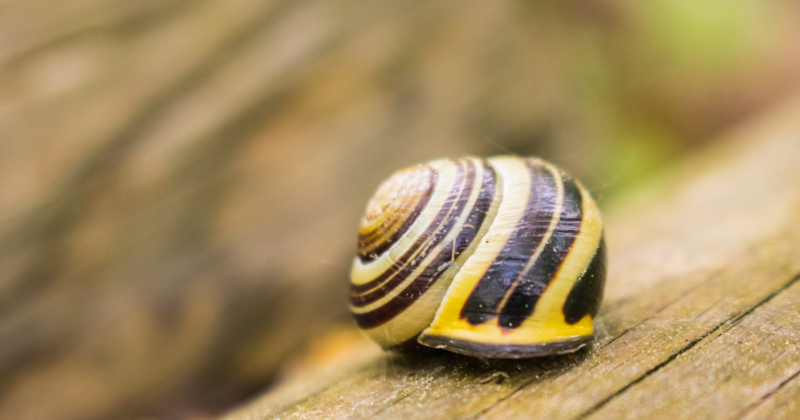
As an aquarist, keeping nerite snails can be beneficial to maintaining a healthy and clean tank environment. These snails are known for their algae-eating abilities, which help keep your tank clean and visually appealing. Hard substrates are ideal for nerite snails, as they prefer to graze on surfaces like rocks and tank walls.
Remember to properly care for your nerite snails by ensuring the water parameters suit their needs. Regular water quality monitoring is essential to keep your snails healthy and active. When kept in ideal conditions, nerite snails can live a long and productive life, contributing to a well-balanced ecosystem within your aquarium.
Breeding nerite snails may be a bit challenging due to their specific requirements and limitations. However, creating an environment with the right water chemistry, temperature, and suitable plants may increase the chances of successful nerite snail breeding. Remember that patience is key, as breeding cannot be forced and may take time to occur naturally.
Incorporating nerite snails into your aquarium is wise for any aquarist looking to maintain a clean and balanced aquatic environment. Their spectacular appearance, tireless algae-removing capabilities, and low reproduction rate in freshwater tanks make them an ideal addition to your aquatic setup.
Frequently Asked Questions
What conditions are needed for Nerite snails to breed?
To breed Nerite snails successfully, you need to create an optimal environment for them. This includes maintaining a balanced water chemistry with proper levels of pH, temperature, and salinity. Also, provide them with suitable plants and hiding spots, as Nerite snails prefer a well-planted tank.
Can Nerite snails breed in a freshwater environment?
No, Nerite snails cannot breed in a purely freshwater environment. While they can live and thrive in freshwater tanks, they will only reproduce in brackish water conditions due to their unique breeding habits.
How often do Nerite snails lay eggs?
Nerite snails do not have a specific egg-laying schedule. The frequency at which they lay eggs depends on factors like water conditions, availability of food, and general wellbeing. A female Nerite snail may lay several eggs in a week if the conditions are suitable.
What is the ideal tank setup for breeding Nerite snails?
To breed Nerite snails, you’ll need an aquarium with a minimum size of 5 gallons per individual snail. This size ensures each snail has enough food, as Nerites mainly feed on algae. The tank should also have hiding spots and plants for the snails to feel secure. Don’t forget to maintain the proper water chemistry, temperature, and salinity levels, as they significantly affect Nerite snail reproduction.
Do Nerite snails reproduce asexually or sexually?
Nerite snails reproduce sexually. They require both male and female snails for successful reproduction. However, determining the gender of Nerite snails is challenging, as males and females look nearly identical. Generally, females are slightly larger than males, but this is not always the case.
What are the growth stages of baby Nerite snails?
After the eggs are laid and fertilized, baby Nerite snails will hatch from the eggs and undergo several growth stages before reaching adulthood. These stages include larval and juvenile phases. During the larval phase, baby Nerites are free-swimming and may eat plankton or other microscopic foods.
Once they reach the juvenile stage, they start developing their shells and begin resembling adult snails. Their growth continues until they reach adulthood and are capable of reproduction.

![Do Snails Eat Grass? [Complete Answer]](https://allourcreatures.com/wp-content/uploads/2021/10/snails-eat-grass-768x519.jpg)


